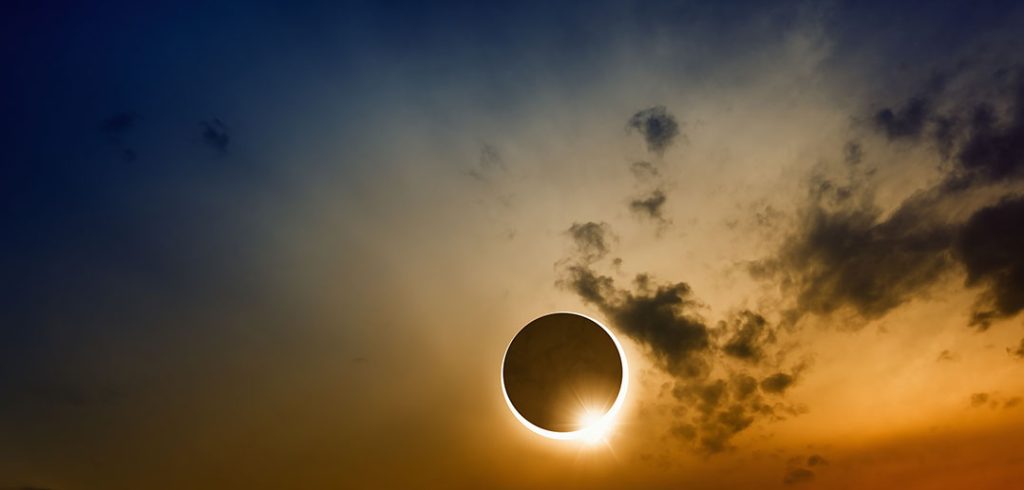For a few minutes on April 8, New York will be embracing its dark side.
At roughly 3:15 p.m., the moon will pass directly in front of the sun as part of the first total solar eclipse to happen in the United States since August 2017.
During the 2017 eclipse, the moon covered about 65% of the sun in New York City. This year, the path of totality—where the moon obscures 100% of the sun—will stretch over Syracuse, just 200 miles from New York City. This means the moon will obscure almost all of the sun in the New York City area. The next time an eclipse will happen in the Northeast will be in 2079.
The eclipse will begin around 2:10 p.m. and finish at around 4:36 p.m., but the best time to watch will be from 3:15 to 3:30 p.m.
Robert Duffin, Ph.D., a lecturer of physics who teaches astronomy at Fordham’s Rose Hill campus, said the fact that the eclipse will be happening in the late afternoon means that any open space will suffice for viewing the event.
“You want to be in a wide space so you can see the effects of 85% coverage. It’s going to be dim, and you’re going to see a difference,” he said.
Eclipses play an important role in Duffin’s class; among other things, students learn that more than 2,000 years ago, Aristotle estimated that the diameter of Earth’s shadow at the moon during a partial lunar eclipse was two and a half times the diameter of the Moon. Ancient Greek astronomer Aristarchus of Samos then determined from observing the umbra (or dark shadow on the surface of the Earth) during a solar eclipse that the Earth’s diameter is about three and a half times the Moon’s diameter.
Here are some great places to catch the eclipse. Remember, never look directly at the sun without protective glasses or other safe viewing methods.
The Bronx
Rose Hill campus
The Fordham Astronomy Club will be set up in the middle of Edwards Parade from 3:15 to 3:45 p.m. The group will use a telescope to project the eclipse onto a screen for safe viewing and also have telescopes set up for the viewing of Jupiter and Saturn, which will be visible during the eclipse. Contact Jackson Saunders at jsaunders20@fordham.edu for more information.
Wave Hill
The 28-acre estate in Riverdale will be hosting a viewing party from 12 to 5 p.m. Visitors will have the chance to pot seeds, make a festive eclipse party hat or celestial floral headband, enjoy live music and storytime with the Riverdale Library, and see the eclipse with free viewing glasses. Read more.
Manhattan
Umpire Rock, Central Park
The 15-foot-high, 55-foot-wide outcropping just north of Hecksher Playground is the perfect place to take in the show near Midtown Manhattan. Enter the park at West 62nd Street and Columbus Circle.
Pier I, Riverside Park South
Jutting into the Hudson River at West 70th Street, this spot guarantees unobstructed views, with the added bonus of seagulls who might not quite know how to react to the changing light.
American Museum of Natural History
The museum will offer family-friendly educational activities and will give out eclipse glasses while supplies last, from 10 a.m. to 3 p.m. Read more.
Brooklyn
Green-Wood Cemetery
The cemetery will host a free event from 1:30 to 5 p.m. featuring special-edition glasses and telescopes equipped with solar filters. There will also be amateur astronomers to help operate telescopes and answer questions, along with self-guided explorations and artist-led installations. Read more.


